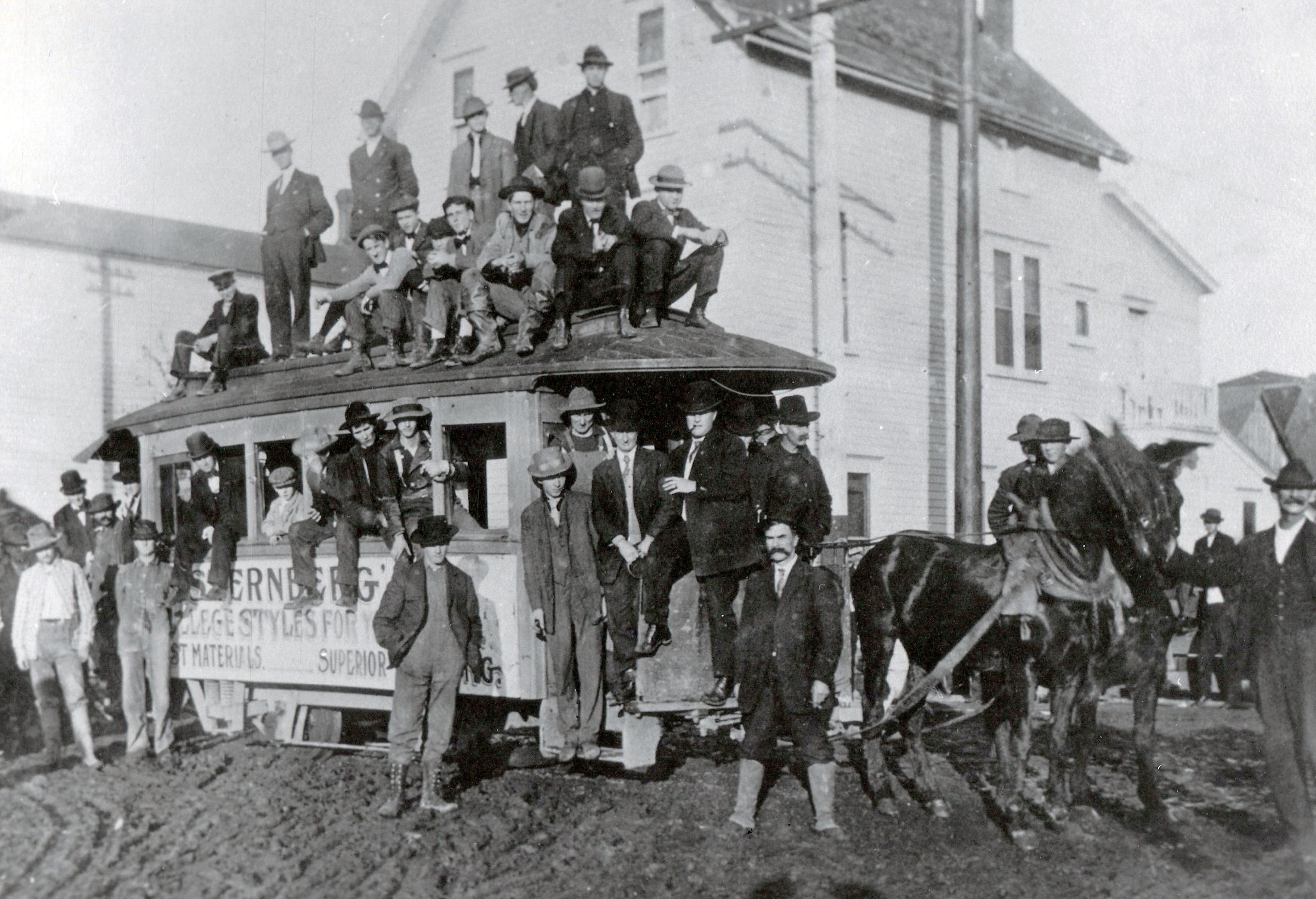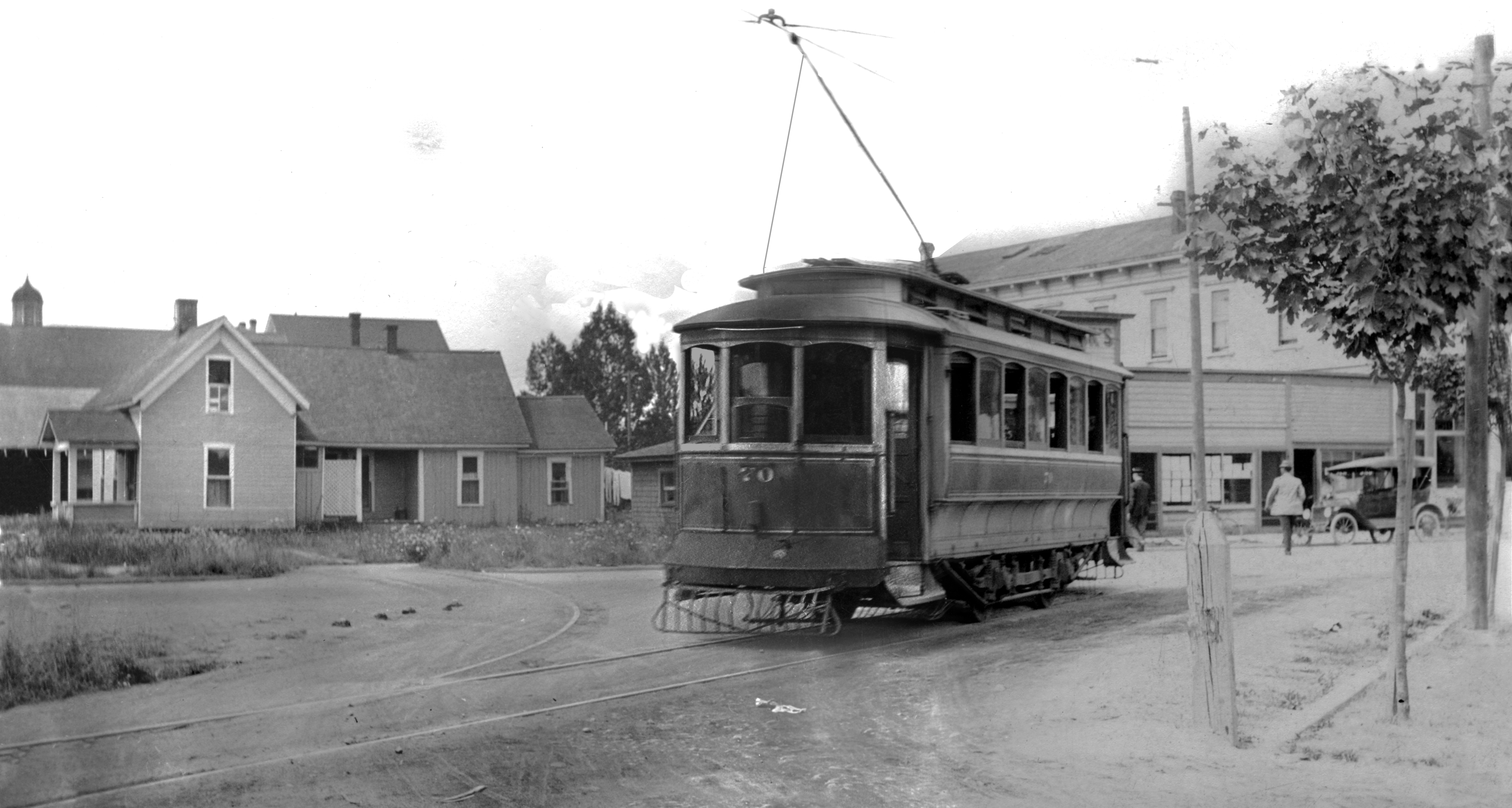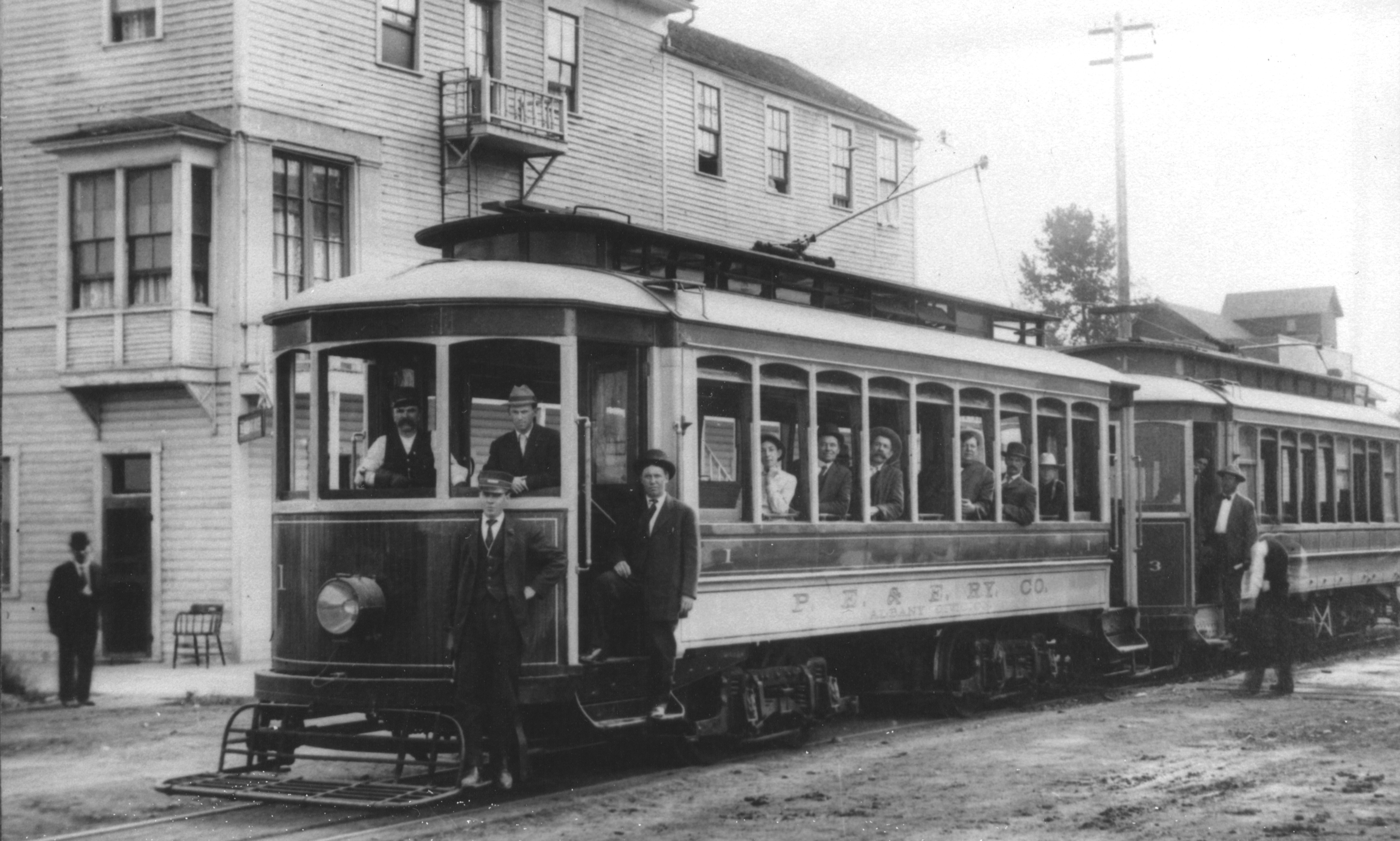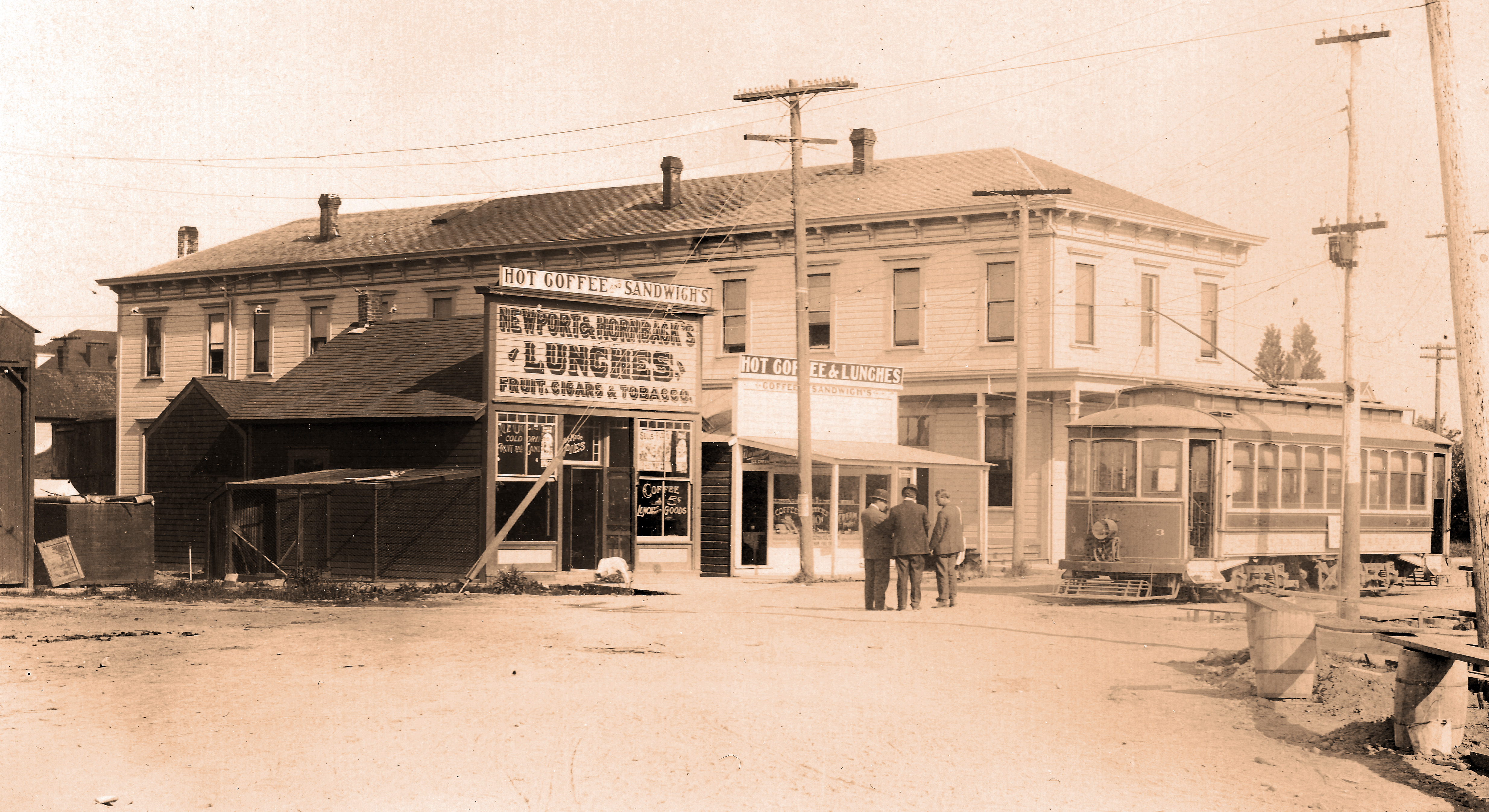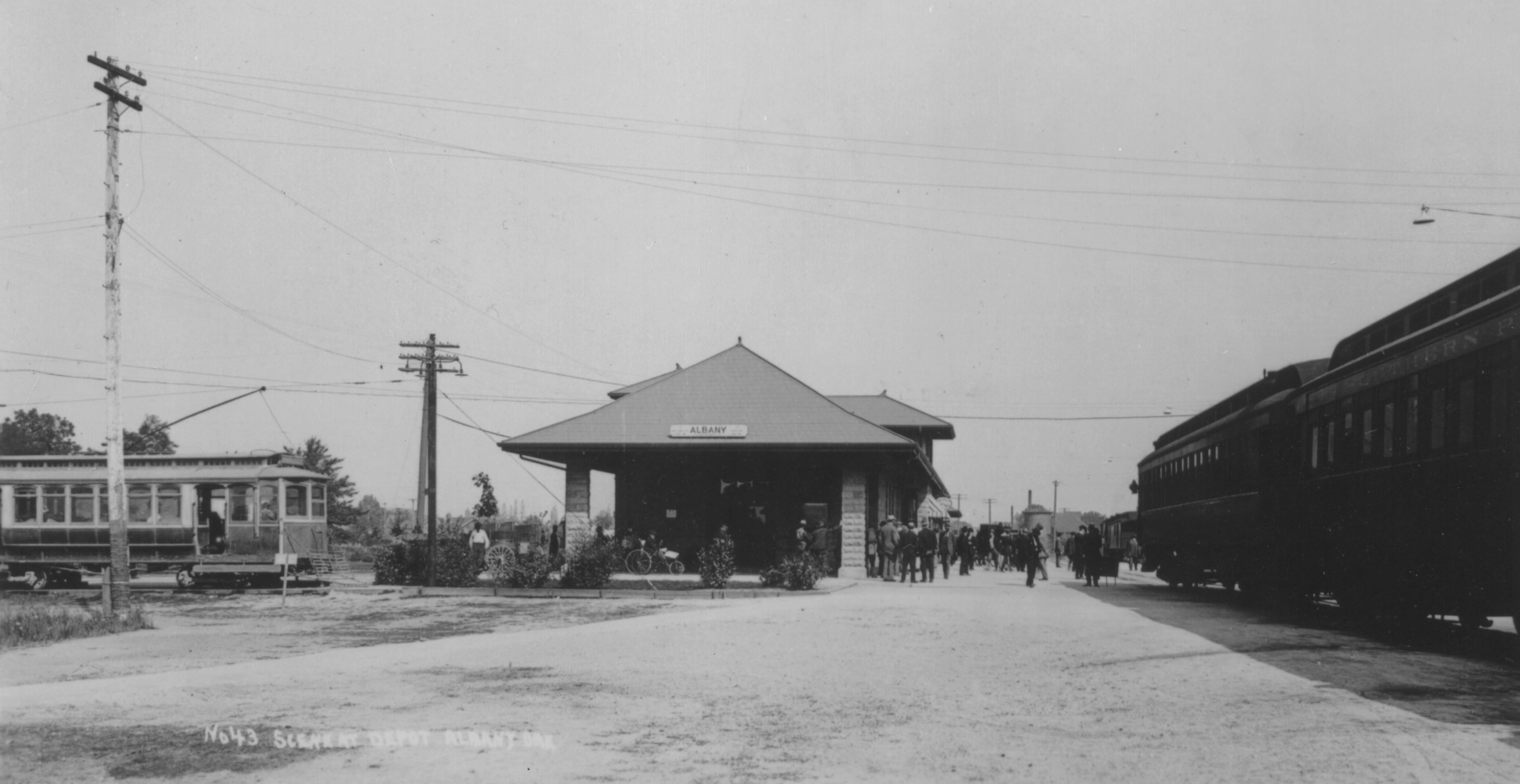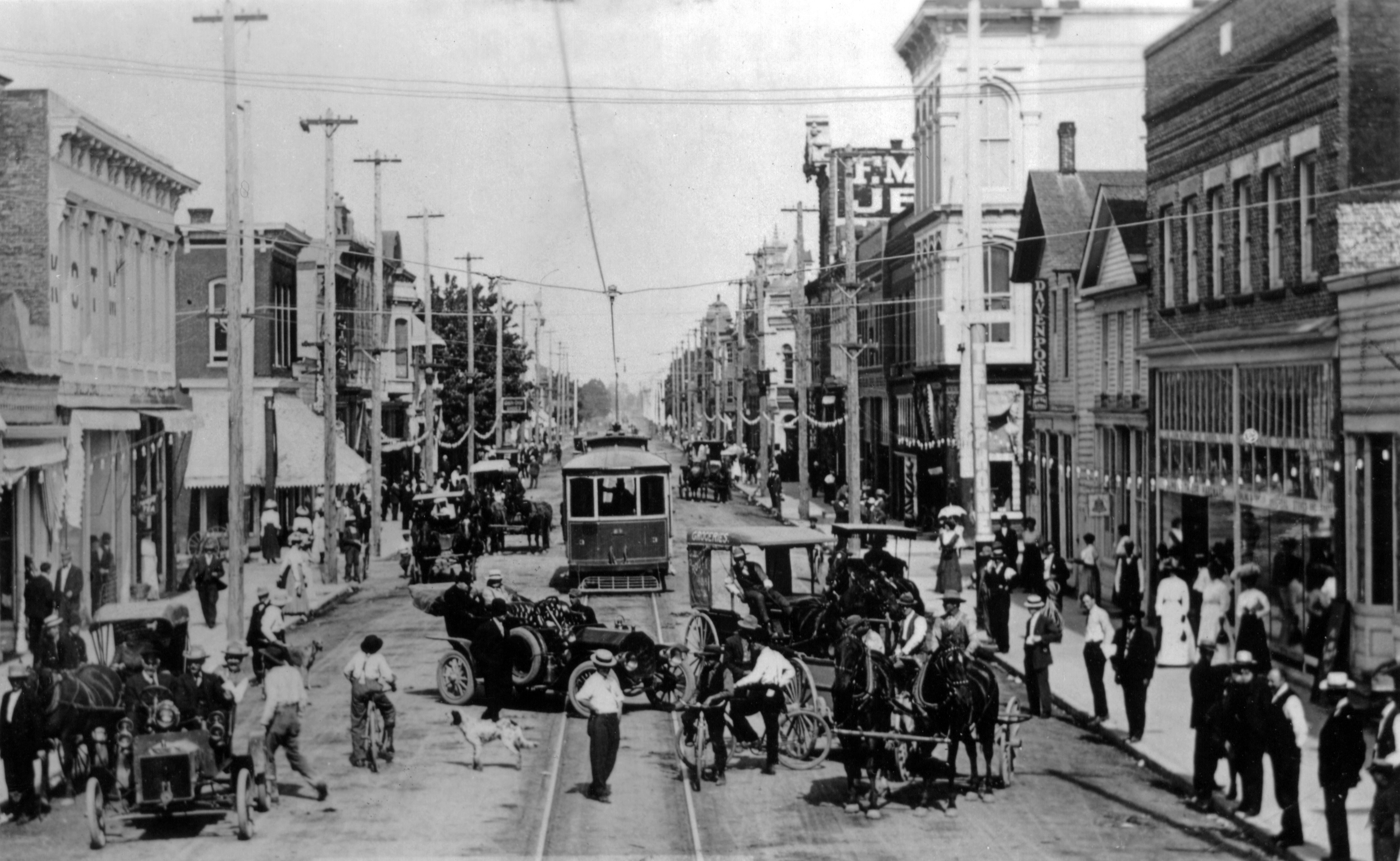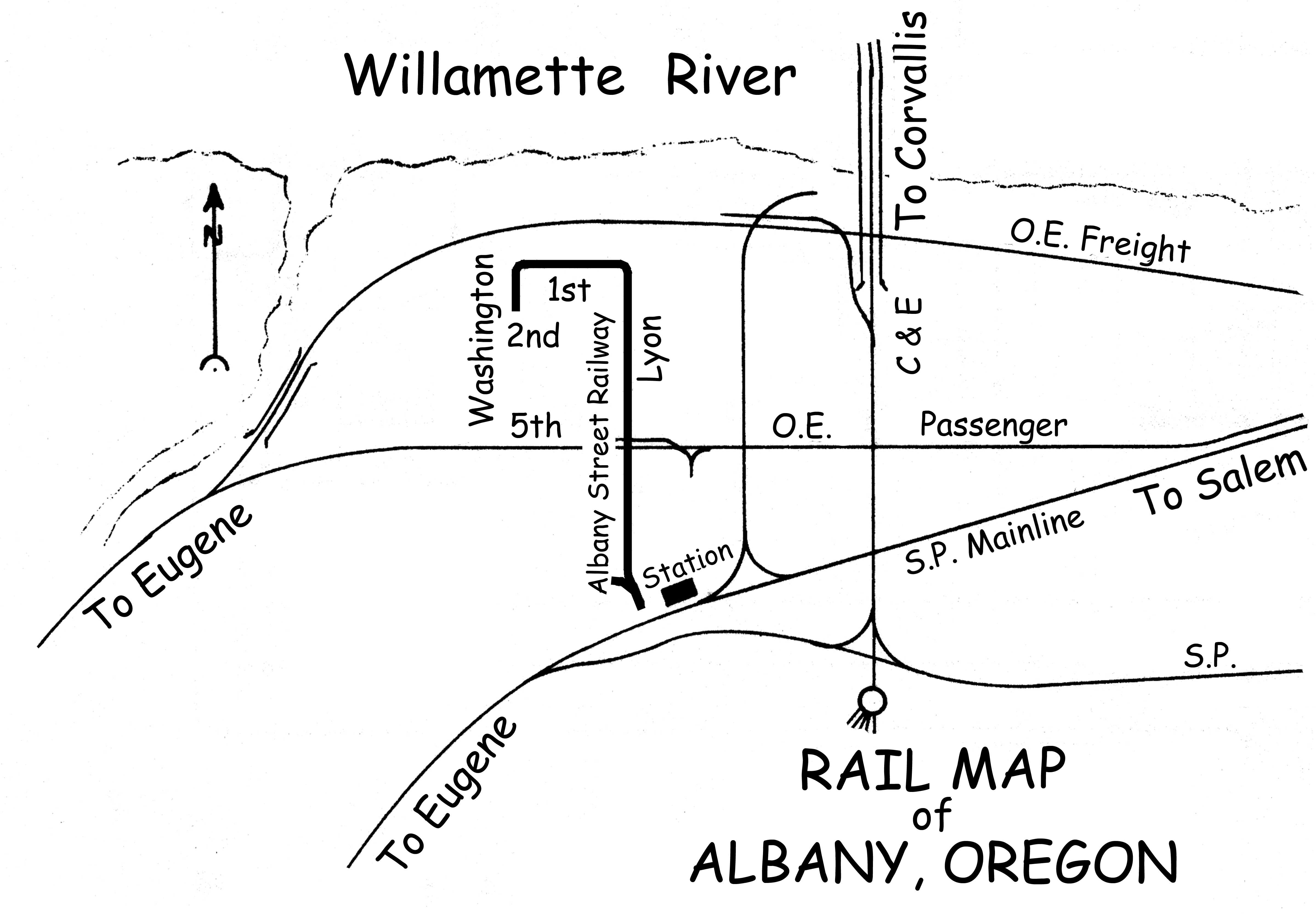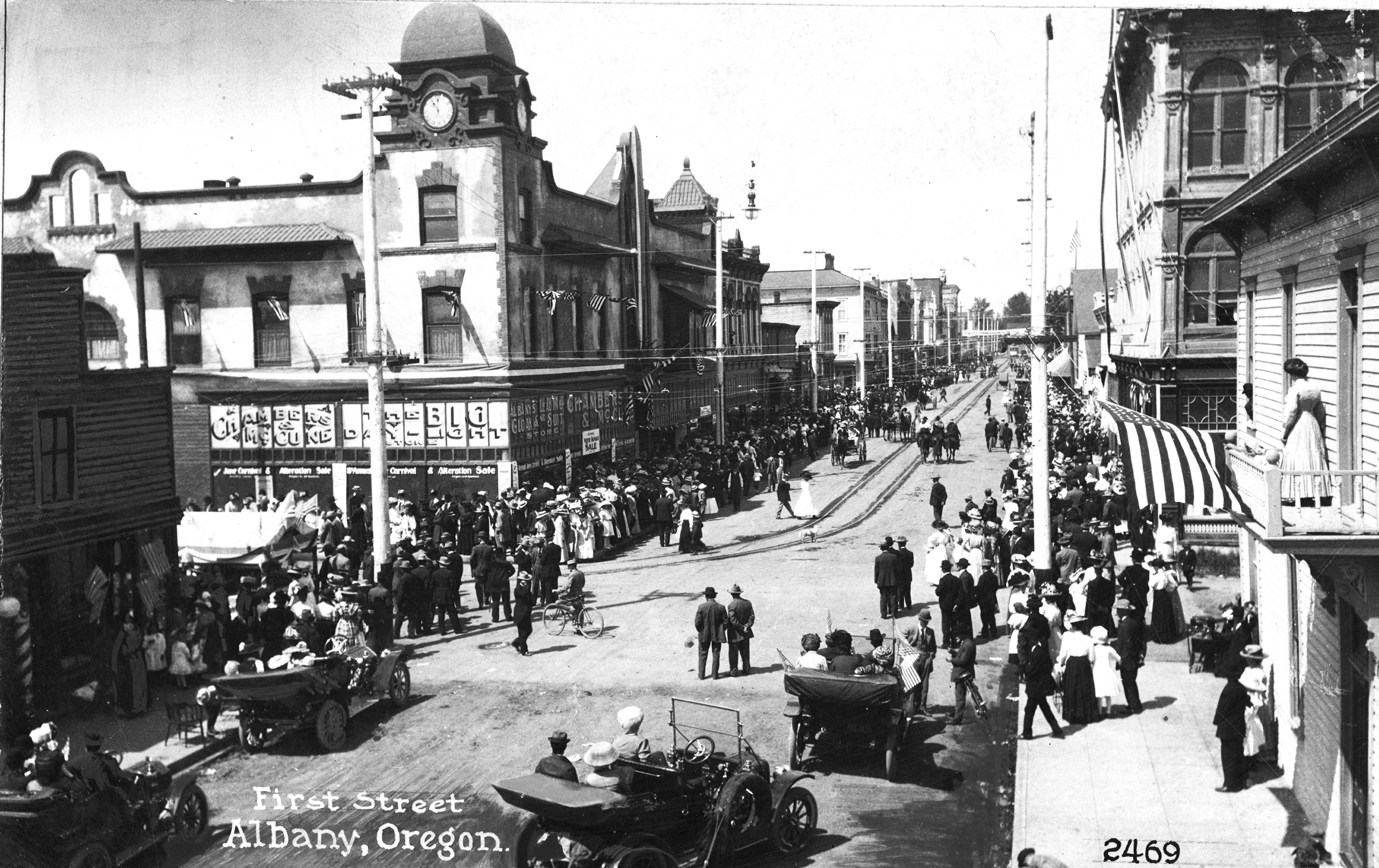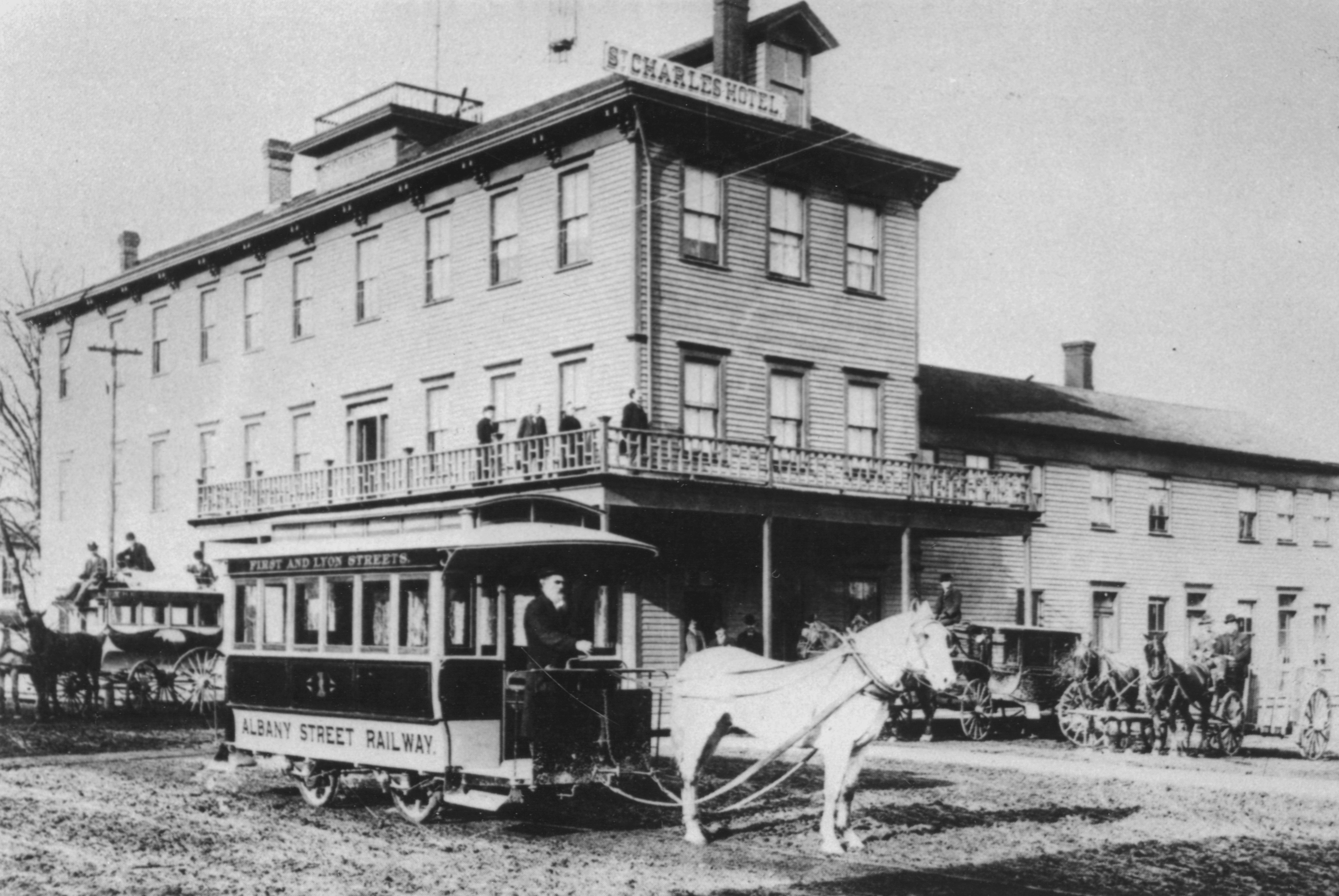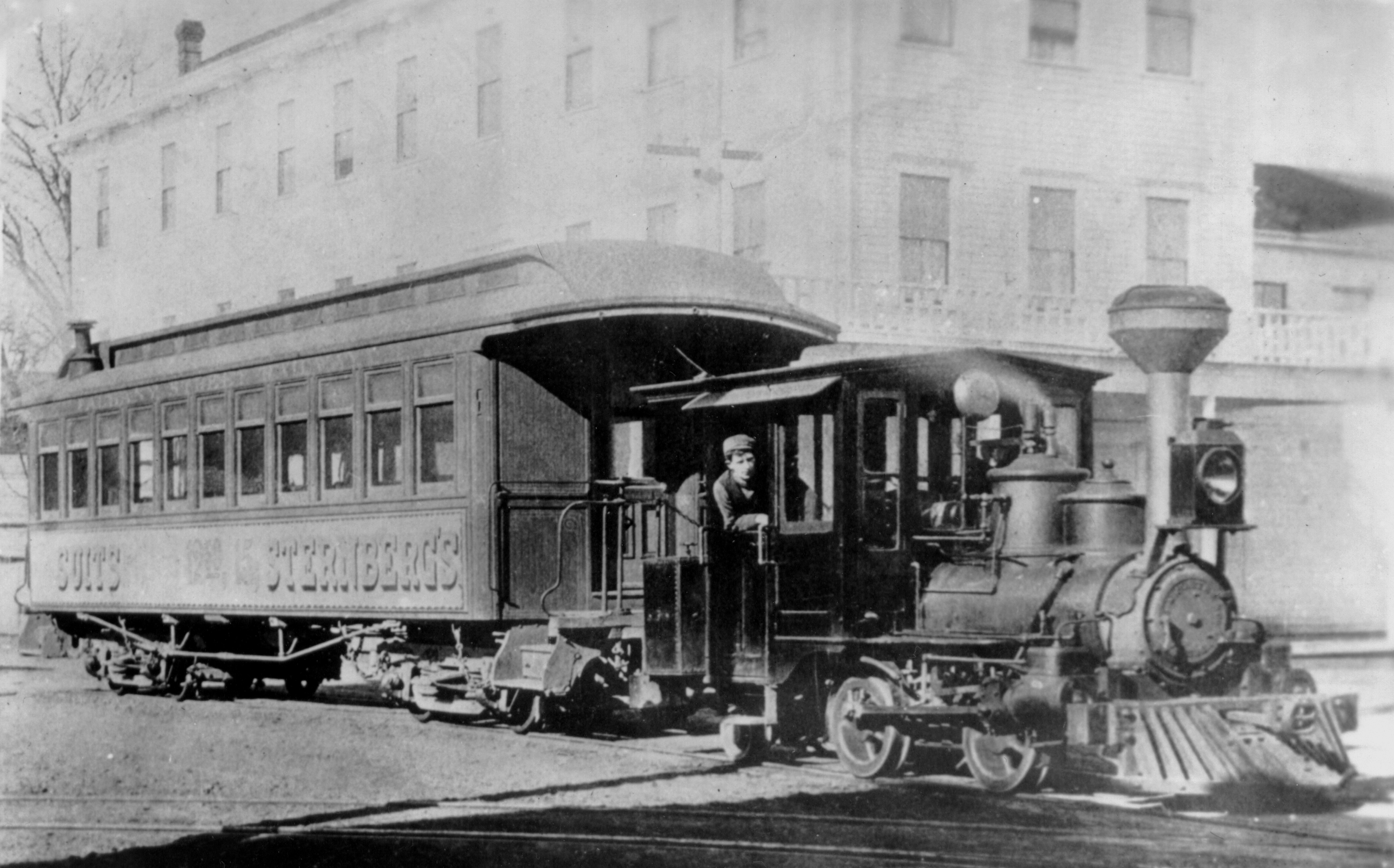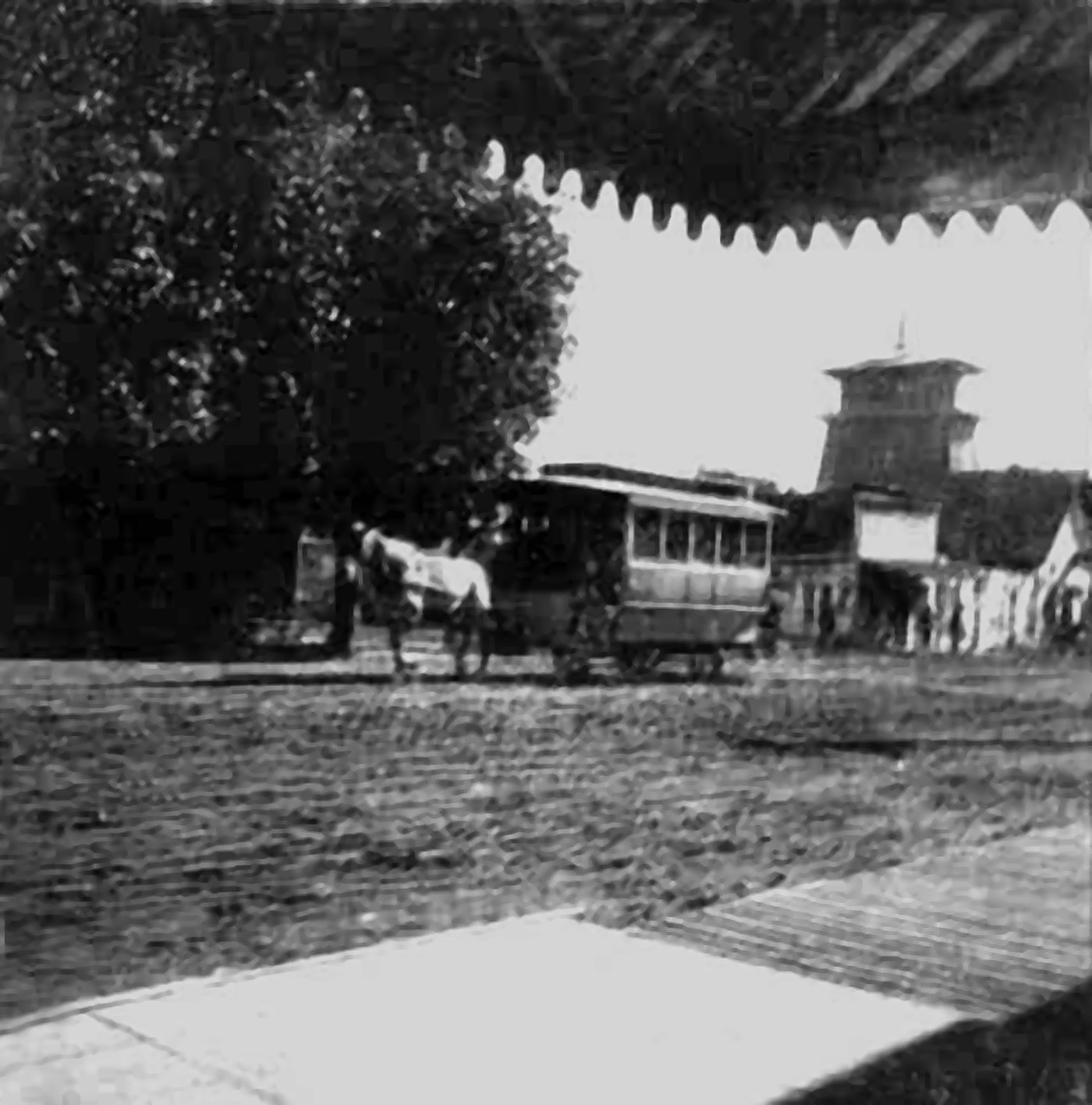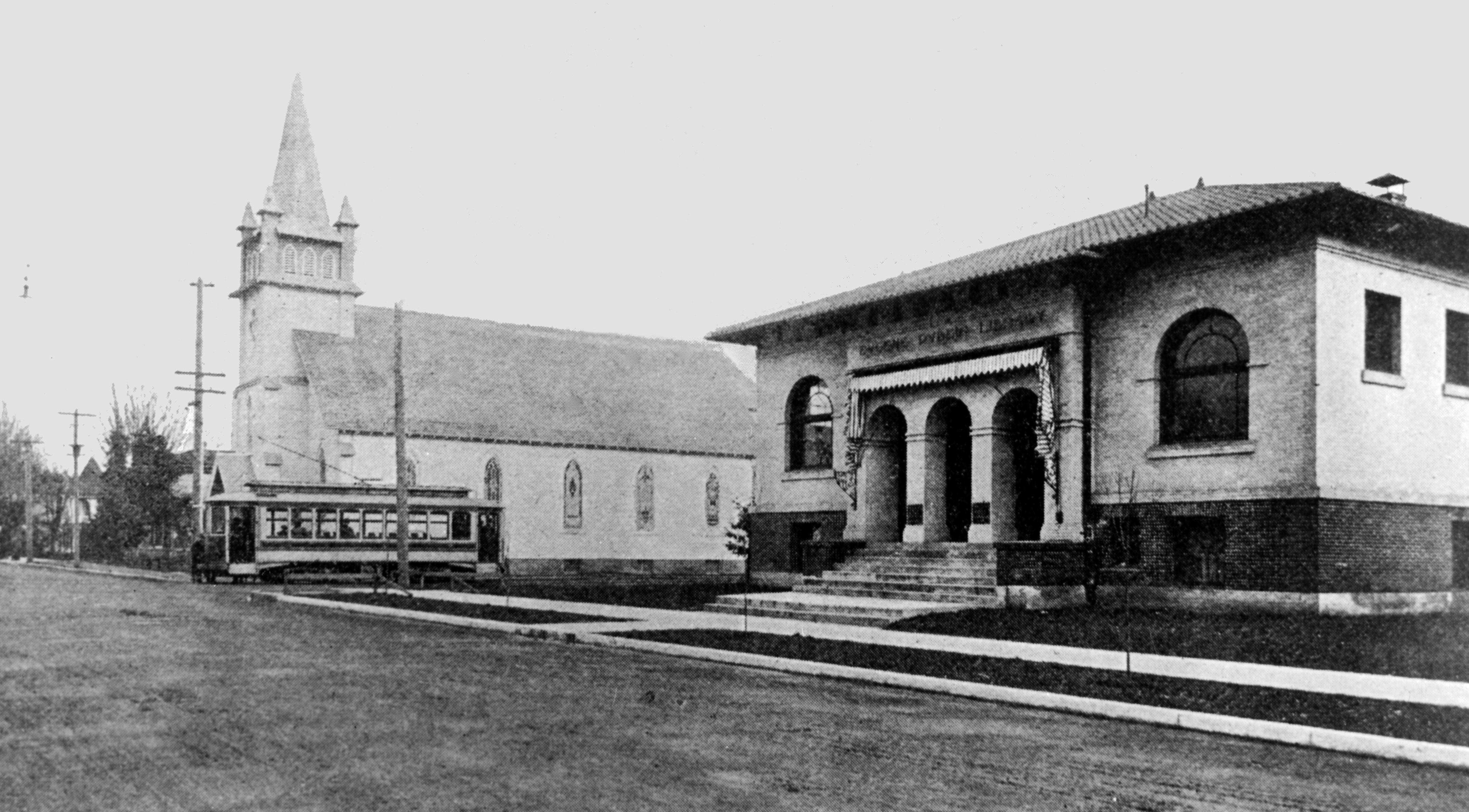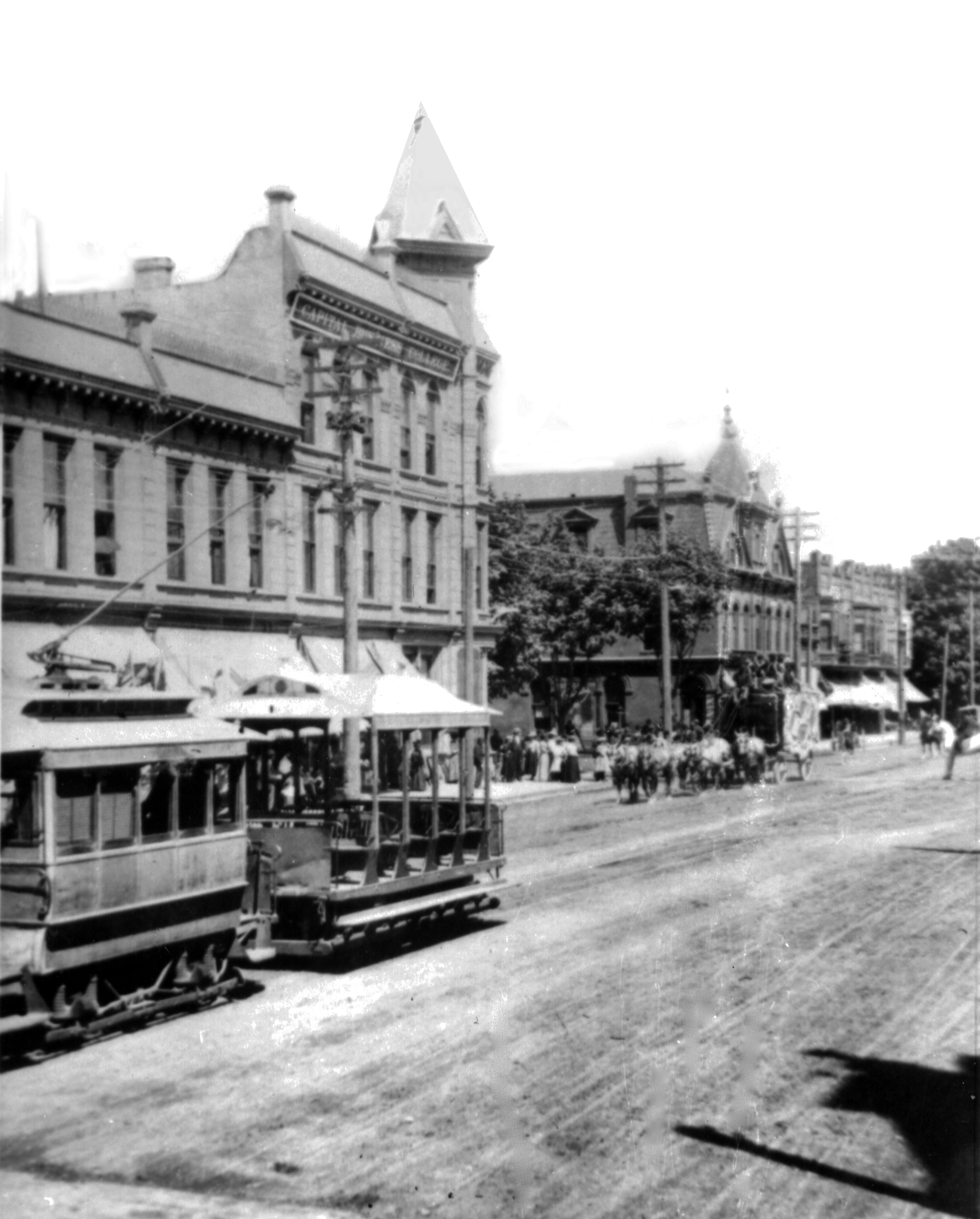The Albany Street Railway Company began operation on August 30, 1889, with a one-mile horse-car line that ran from the Southern Pacific depot to downtown by way of Lyon Street and First Avenue, terminating at Second and Washington. Car No. 1 was manufactured locally by A.J. Anslyn and the Albany Iron Works.
In 1892, an extension was built from the train station south to the Goltra Addition. A steam dummy engine pulled Car No. 1 over the half-mile route, which ended near the orphan home run by the Ladies Aid Society. Steam dummies were small locomotives housed in streetcar-like bodies that were believed to be attractive, as well as less frightening to horses.
William H. Goltra, a banker and Street Railway vice president, was responsible for procurring the engine, but the railway found it too expensive to operate. In 1895, the decision was made to abandon both it and the branch to Goltra Park.
Surprisingly, this was not the end of Albany's flirtation with steam-powered transit. The Albrany Street Railway tried one more time, replacing the dummy train with a Pullman coach pulled by a "dinky" Porter locomotive acquired secondhand from Jacksonville, Oregon. Unfortunately, this locomotive proved no more efficient than the first. By 1900, the first street railway in the Willamette Valley to mechanize operations reverted to horse-drawn streetcars.
Electrification of the Albany Street Railway came after its acquisition by the Portland, Eugene and Eastern Railway on December 31, 1908 (the Southern Pacific Railroad later purchased the Portland, Eugene and Eastern Railway in 1915). Two trolleys served Albany’s single route. Interestingly, there is no mention of a car barn after the horse cars were retired. The new electric streetcars were apparently kept in a railway yard, and they were swapped with cars from the Southern Pacific’s Salem or Eugene streetcar systems when they needed maintenance.
As it happened, trolleys would reign in Albany for less than a decade. In 1918, the city that had inaugurated the first motorized street railway in the state outside of Portland became the first to abandon streetcars.
-
![Last Albany horsecar trip, car no. 1 at 2nd and Lyon, 1909.]()
Albany streetcar, last horsecar trip, 1909.
Last Albany horsecar trip, car no. 1 at 2nd and Lyon, 1909. Courtesy Richard Thompson
-
![Trolley 70 nearing Lyon St., Albany.]()
Albany streetcar, Trolley 70.
Trolley 70 nearing Lyon St., Albany. Courtesy Richard Thompson
-
![Albany trolleys 1 and 3 in front of Revere House on 1st and Ellsworth Sts., about 1910.]()
Albany streetcar, trolleys 1 and 3, ca 1910.
Albany trolleys 1 and 3 in front of Revere House on 1st and Ellsworth Sts., about 1910. Courtesy Richard Thompson
-
![Albany streetcar No. 3 in front of Newport and Hornback lunch counter and Depot Hotel on Lyon St., 1910s.]()
Albany streetcar, Lyon St, 1910s.
Albany streetcar No. 3 in front of Newport and Hornback lunch counter and Depot Hotel on Lyon St., 1910s. Courtesy Mark Moore
-
![Trolley in 76-78 series at Southern Pacific train depot, arrived from Los Angeles Ry. in 1912.]()
Albany streetcar, Trolley 76-78, 1912.
Trolley in 76-78 series at Southern Pacific train depot, arrived from Los Angeles Ry. in 1912. Courtesy Richard Thompson
-
![Albany trolley celebration documented in postcard image of trolley no. 3 on 1st St., 1909.]()
Albany streetcar, postcard, 1909.
Albany trolley celebration documented in postcard image of trolley no. 3 on 1st St., 1909. Courtesy Richard Thompson
-
![Map of Albany streetcar system as it was about 1910.]()
Albany rail map, c 1910.
Map of Albany streetcar system as it was about 1910. Courtesy Richard Thompson
-
![First Street, Albany, early 1900s.]()
Albany, First St., early 1900s, ba007945.
First Street, Albany, early 1900s. Oreg. Hist. Soc. Research Lib., ba007945
-
![Albanys first streetcar at terminus of 1st and Washington Sts. in front of St. Charles Hotel, about 1890.]()
Albany streetcar, first streetcar, ca 1890.
Albanys first streetcar at terminus of 1st and Washington Sts. in front of St. Charles Hotel, about 1890. Courtesy Richard Thompson
-
![Albany Street Railway Steam dummy 3 and horsecar 1 headed to Goltra Park, 1890s.]()
Albany streetcar, steam dummy, 1890s.
Albany Street Railway Steam dummy 3 and horsecar 1 headed to Goltra Park, 1890s. Courtesy Robert Potts
-
![Porter steam "dinky" locomotive and railroad coach in front of St. Charles Hotel on 1st and Washington Sts., about 1900.]()
Albany streetcar, steam donkey pulling coach, ca 1900.
Porter steam "dinky" locomotive and railroad coach in front of St. Charles Hotel on 1st and Washington Sts., about 1900. Courtesy Robert Potts
Related Entries
-
![Albany]()
Albany
The Albany area—situated at the confluence of the Calapooia and Willame…
-
![Corvallis streetcar system]()
Corvallis streetcar system
On December 17, 1889, a group of real estate developers, led by Zephen …
-
![Eugene streetcar system]()
Eugene streetcar system
The first street railway in Eugene was a mule-powered system that began…
-
![Salem streetcar system]()
Salem streetcar system
The first streetcars in Salem were horsecars that began running between…
Map This on the Oregon History WayFinder
The Oregon History Wayfinder is an interactive map that identifies significant places, people, and events in Oregon history.
Further Reading
Mullen, Floyd. The Land of Linn. Albany, OR: Dalton's Printing, 1971.
Thompson, Richard. Lost Oregon Streetcars. Charleston, SC: History Press, 2017.
Thompson, Richard. Willamette Valley Railways. Charleston, SC: Arcadia Publishing, 2008.

